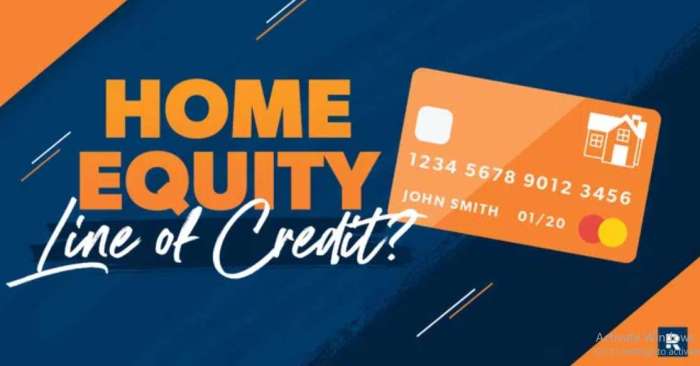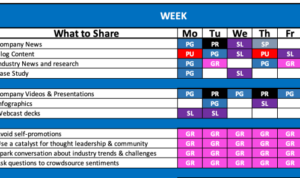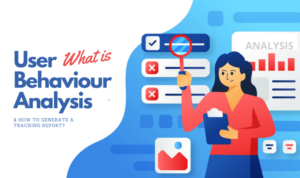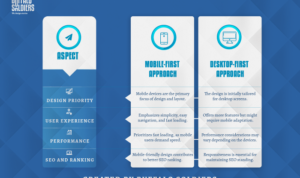Diving into the world of Home Equity Lines of Credit (HELOCs), get ready for a ride filled with financial possibilities and smart borrowing strategies. From understanding the basics to exploring the nuances, this topic opens up a realm of opportunities for homeowners looking to leverage their property’s equity.
As we delve deeper, we’ll uncover the intricate workings of HELOCs, shedding light on how they can be a valuable tool in managing finances and achieving various goals.
What is a HELOC?
A Home Equity Line of Credit (HELOC) is a type of loan that allows homeowners to borrow money using the equity in their home as collateral. Unlike a traditional home equity loan, where you receive a lump sum upfront, a HELOC acts more like a credit card with a predetermined credit limit that you can borrow against as needed.
How HELOCs Differ from Other Types of Loans
- Flexibility: HELOCs offer flexibility in borrowing, as you can choose when and how much to borrow within your credit limit.
- Variable Interest Rates: HELOCs typically have variable interest rates, which means your monthly payments can vary based on market conditions.
- Revolving Credit: Similar to a credit card, HELOCs allow you to borrow, repay, and borrow again up to your credit limit during the draw period.
Examples of How HELOCs Can Be Used by Homeowners
- Home Renovations: Many homeowners use HELOCs to fund home improvement projects like kitchen remodels, bathroom renovations, or adding a deck.
- Debt Consolidation: Consolidating high-interest debt, such as credit card debt, into a HELOC can help lower overall interest costs and simplify monthly payments.
- Emergency Funds: Keeping a HELOC open can provide homeowners with a financial safety net in case of unexpected expenses like medical bills or major home repairs.
How do HELOCs work?

When it comes to Home Equity Lines of Credit (HELOCs), it’s all about tapping into the equity you’ve built up in your home. Let’s break down how these bad boys actually work.
HELOCs are like a credit card, but instead of being based on your credit score, they’re based on the value of your home. So, the first step in getting a HELOC is to have some equity in your home. Once you’ve got that covered, you can apply for a HELOC through a lender, just like you would for a mortgage.
Obtaining a HELOC
- Submit an application with your lender, providing information on your income, credit score, and the value of your home.
- Your lender will then determine the maximum amount you can borrow based on the equity in your home.
- Upon approval, you can access your HELOC funds either through checks or a credit card linked to the account.
Interest Rates on HELOCs
- Interest rates on HELOCs are typically variable, meaning they can fluctuate over time based on market conditions.
- These rates are often tied to the prime rate, with an added margin determined by the lender.
- Some HELOCs may offer introductory rates for a certain period before reverting to the variable rate.
Repayment Terms and Conditions
- During the draw period, typically 5-10 years, you can borrow from the HELOC and make interest-only payments.
- After the draw period ends, the repayment period begins, usually lasting 10-20 years, where you pay back both the principal and interest.
- Failure to make payments can result in foreclosure on your home, as it serves as collateral for the HELOC.
Pros and cons of using a HELOC.
When considering a Home Equity Line of Credit (HELOC), it’s essential to weigh the advantages and disadvantages to make an informed decision about utilizing this financial tool.
Advantages of using a HELOC:
- Flexibility in borrowing: HELOCs allow you to borrow funds as needed, similar to a credit card, giving you access to a revolving line of credit.
- Lower interest rates: HELOCs typically have lower interest rates compared to credit cards or personal loans, making them a cost-effective borrowing option.
- Interest tax deduction: In some cases, the interest paid on a HELOC may be tax-deductible, providing potential savings for homeowners.
- Use for various purposes: HELOC funds can be used for home renovations, debt consolidation, emergencies, or any other financial need.
Potential drawbacks of utilizing a HELOC:
- Risk of losing your home: Since a HELOC is secured by your home equity, failure to repay the loan could result in foreclosure, putting your home at risk.
- Variable interest rates: HELOCs often come with variable interest rates, meaning your monthly payments could fluctuate based on market conditions, leading to potential higher costs over time.
- Temptation to overspend: The accessibility of HELOC funds may lead to overspending and accumulating more debt than initially planned, potentially causing financial strain.
Comparison to other borrowing options:
- HELOC vs. personal loans: While personal loans offer fixed interest rates and terms, HELOCs provide more flexibility and potentially lower interest rates.
- HELOC vs. credit cards: HELOCs generally have lower interest rates compared to credit cards, making them a more cost-effective option for borrowing larger sums of money.
- HELOC vs. home equity loan: Unlike a HELOC, a home equity loan provides a lump sum payment upfront with a fixed interest rate, which may be preferable for those seeking predictability in their borrowing.
Factors to consider before getting a HELOC.
Before diving into a Home Equity Line of Credit (HELOC), homeowners should carefully evaluate their financial situation and consider several key factors to ensure they make an informed decision.
Credit Scores and Home Equity Value Impact
When applying for a HELOC, credit scores and home equity value play a crucial role in determining eligibility and the terms of the line of credit. Lenders typically look for a credit score of at least 620 to qualify for a HELOC, although higher scores can lead to better interest rates and higher credit limits. Additionally, the amount of home equity you have will impact how much you can borrow through a HELOC. It’s essential to have a good understanding of your credit score and home equity value before applying for a HELOC to assess your eligibility and potential borrowing capacity.
Tips for Responsible HELOC Management
Once you have obtained a HELOC, it’s important to manage it responsibly to avoid financial pitfalls. Here are some tips to help you make the most of your HELOC while staying financially secure:
- Use the funds for planned expenses or investments that will increase the value of your home.
- Avoid using the HELOC for frivolous spending or non-essential purchases to prevent unnecessary debt.
- Make timely payments to avoid defaulting on the HELOC, which can lead to foreclosure on your home.
- Monitor your spending and borrowing habits to ensure you stay within your financial means.
By considering these factors and following these tips, homeowners can make informed decisions when it comes to applying for and managing a HELOC.






